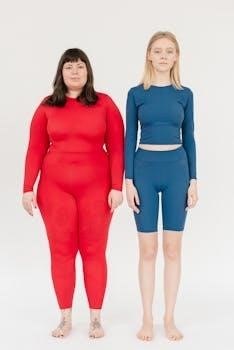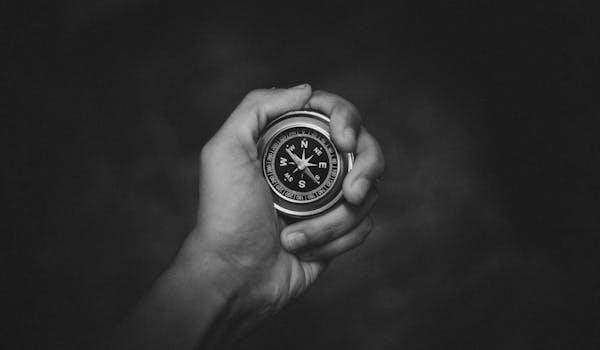Understanding Abaya Sizes
Understanding abaya sizes is crucial for achieving the perfect fit and ensuring comfort. The right size not only enhances your overall appearance but also allows for ease of movement and confidence in your attire.

Importance of Accurate Abaya Sizing
Accurate abaya sizing is paramount for several reasons, significantly impacting comfort, modesty, and overall appearance. A well-fitted abaya drapes gracefully, enhancing the wearer’s silhouette while adhering to modest dressing principles. An ill-fitting abaya, whether too tight or too loose, can detract from the intended aesthetic and cause discomfort.
An abaya that is too small may restrict movement and compromise modesty, while an overly large abaya can appear shapeless and unflattering. Precise sizing ensures ease of movement, allowing for comfortable wear throughout the day. Moreover, accurate sizing contributes to the longevity of the garment, preventing undue stress on seams and fabric.
By prioritizing accurate measurements and consulting size charts, individuals can select abayas that provide a comfortable, modest, and aesthetically pleasing fit, reflecting both personal style and cultural values. Paying attention to size details allows for the best possible wearing experience.

Standard Abaya Size Charts
Standard abaya size charts provide a general guideline for selecting the appropriate size based on body measurements. These charts typically include height and may incorporate bust, waist, and hip measurements for a more precise fit.
Height-Based Sizing
Height-based sizing is a common method for determining the appropriate abaya size, as abayas are primarily designed based on length. This approach simplifies the selection process, especially since abayas are typically loose-fitting garments. To utilize height-based sizing, measure your height accurately without shoes.
Refer to the size chart provided by the brand, which will correlate your height to a specific abaya size (e.g., sizes 52, 54, 56, etc.). If you plan to wear heels regularly, consider selecting the next size up to ensure the abaya maintains its intended length and avoids appearing too short. For example, if your height is 5’3″ (160 cm) and the chart recommends size 54, but you often wear heels, opt for size 56.
Bust, Waist, and Hip Measurements
While height is the primary factor in abaya sizing, considering your bust, waist, and hip measurements ensures a more accurate and comfortable fit, especially for individuals with curvier body shapes. Measure around the fullest part of your bust, your natural waistline, and the widest part of your hips, ensuring the measuring tape is level and snug but not too tight.
Compare these measurements to the brand’s size chart, which often includes these dimensions alongside height. If your measurements fall between sizes, it’s generally recommended to choose the larger size for a looser fit or the smaller size for a more tailored look, depending on your preference and the abaya’s design. Some abayas come with belts, allowing for further adjustments at the waist.

How to Measure Yourself for an Abaya
Measuring yourself accurately is essential for selecting the correct abaya size. Start by standing straight against a wall with your heels together. Use a measuring tape to determine your height from the top of your head to the floor, ensuring the tape is perpendicular to the ground.
Next, measure your bust, waist, and hips using a flexible measuring tape. For the bust, measure around the fullest part, keeping the tape level. Measure your natural waistline, which is usually the narrowest part of your torso. Finally, measure around the fullest part of your hips. Record all measurements in both inches and centimeters. These measurements will help you compare your size to the brand’s specific size chart.
Factors Affecting Abaya Fit
Abaya fit is influenced by style and fabric. Different designs offer varied silhouettes, while fabric weight and stretch affect drape and comfort. Always check product details for specific fit information before purchasing.
Style and Design Variations
Abayas come in diverse styles, from classic loose-fitting designs to more tailored silhouettes with belts or embellishments. The cut and construction significantly impact how an abaya fits. For example, a butterfly abaya offers a wider, flowing fit compared to a straight-cut design. Some abayas feature intricate embroidery or beadwork, which can add weight and affect the drape.
Consider the intended use when choosing a style; a simple, minimalist abaya is suitable for everyday wear, while a more elaborate design is ideal for special occasions. Always refer to the brand’s specific size chart, as sizing can vary significantly between different styles and designers. Be mindful of the shoulder and sleeve construction, as these elements can also affect the overall fit and comfort.
Fabric Type
The fabric of an abaya plays a vital role in its fit and drape. Different materials have varying weights, stretch, and textures, all of which influence how the garment falls on the body. Lightweight fabrics like chiffon or crepe offer a flowing, airy feel, while heavier materials such as velvet or linen provide more structure and coverage.
Stretchy fabrics like jersey or knit blends can offer a more forgiving fit, accommodating a wider range of body shapes. However, they may also cling more to the body, so consider your desired level of modesty. Non-stretch fabrics require precise measurements to ensure a comfortable fit, as there is no give in the material. Always check the fabric composition and care instructions before purchasing, as some materials may shrink or require special cleaning.

Tips for Choosing the Right Abaya Size
Choosing the right abaya size involves considering your height, body shape, and the desired fit. Always refer to brand-specific size charts and factor in heel height for accurate length selection.
Considering Height and Heel Height
When selecting an abaya, height is the primary measurement to consider. Abaya sizes typically correlate with the length of the garment in inches, reflecting your height in feet and inches. For example, a size 56 abaya is generally suitable for someone who is 5’6″ tall, while a size 50 is more appropriate for someone who is 5’0″.
However, it’s essential to also consider the height of the heels you plan to wear with the abaya. If you frequently wear heels, especially on a daily basis, choosing an abaya that is slightly longer than your actual height is advisable. This ensures that the hem of the abaya does not appear too short when you are wearing heels, maintaining a modest and elegant look. Conversely, if you primarily wear flats, selecting an abaya that matches your exact height will prevent the hem from dragging on the ground.
Therefore, always measure your height while wearing the type of shoes you intend to wear with the abaya to ensure the most accurate fit. This attention to detail will help you choose an abaya that complements your style and provides the desired coverage.
Accounting for Body Shape
While abaya sizes are primarily determined by height, understanding your body shape is crucial for achieving a flattering fit. Abayas are designed to be loose-fitting, but variations in body shape can influence how the garment drapes and falls. For individuals with curvier figures, selecting an abaya one size larger than your height-based size is often recommended; This ensures ample room in the bust and hip areas, preventing the fabric from clinging and maintaining a modest silhouette.
For those with a straighter body shape, sticking to the height-based size usually works well, allowing the abaya to flow gracefully without appearing too voluminous. Some abayas come with belts, offering the option to cinch the waist and create a more defined shape.
Consider the cut and style of the abaya. A-line abayas are universally flattering, while empire waist designs can accentuate the bust. Always refer to the brand’s size chart and product descriptions for specific measurements and style recommendations. Paying attention to these details will help you select an abaya that complements your body shape and enhances your overall look.
Brand-Specific Size Guides
When shopping for abayas, relying solely on standard size charts can be misleading. Different brands often have their unique sizing conventions, leading to variations in fit. Therefore, consulting brand-specific size guides is essential for ensuring accurate selection.
These guides typically provide detailed measurements for height, bust, waist, and hips, allowing you to compare your body measurements with the brand’s specifications. Some brands may also include additional measurements, such as shoulder width or sleeve length.
Before making a purchase, locate the size chart on the brand’s website or product page; Pay close attention to the units of measurement used (inches or centimeters) and ensure you are using the correct conversion if necessary.
If you find yourself between two sizes, consider the style of the abaya and your personal preferences. For a looser fit, opt for the larger size; for a more tailored look, choose the smaller size. When in doubt, contact the brand’s customer service for assistance with sizing. Remember, investing time in understanding brand-specific size guides can save you the hassle of returns and exchanges, ensuring you receive an abaya that fits perfectly.
Where to Find Size Charts
Locating accurate size charts is paramount when purchasing abayas online or in-store. These charts are your key to ensuring a well-fitted garment, minimizing the need for returns or alterations. Here’s a guide to finding them⁚
Online Retailers⁚ Most online stores selling abayas will feature a size chart on each product page. Look for a link labeled “Size Chart,” “Size Guide,” or something similar, usually near the product description or size selection options.
Brand Websites⁚ For specific brands, visit their official website. They typically have a dedicated size chart section that covers all their products, including abayas. This is often the most reliable source.
Product Descriptions⁚ Some retailers include size information directly within the product description. While this might not be as detailed as a dedicated chart, it can offer valuable insights.
Customer Service⁚ If you can’t find a size chart, don’t hesitate to contact the retailer’s customer service; They should be able to provide you with the necessary measurements or guide you to the correct resources.
Social Media⁚ Some brands also share size information on their social media pages, such as Instagram or Facebook.
Always remember that size charts can vary between brands, so it’s essential to consult the specific chart for the abaya you’re interested in buying.
